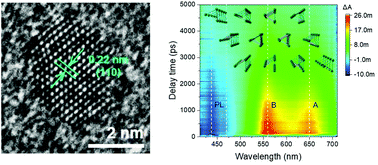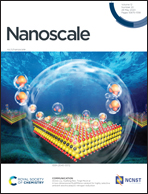Photocarrier relaxation pathways in selenium quantum dots and their application in UV-Vis photodetection†
Abstract
Recently, chain-like materials have attracted significant attention due to their unique structure and outstanding electro-optical properties. However, the photocarrier dynamics and pathways in these materials that determine the electro-optical performances of the prepared devices have barely been touched. Herein, selenium quantum dots (Se QDs), one typical chain-like material, were prepared via a facile liquid phase exfoliation approach. The photocarrier dynamics in selenium quantum dots were systematically investigated by ultrafast transient absorption spectroscopy in the ultraviolet-visible regime. Four photocarrier decay pathways with different lifetimes were firstly detected, and they assist in the elucidation and reconstruction of the energy schematic diagram of Se QDs. Owing to the broadband photo-response and fast recovery time of Se QDs, a photoelectrochemical (PEC)-type photodetector was proposed for the first time to our knowledge, demonstrating its excellent photodetection properties. Considering the feasible fabrication method and clear photocarrier pathways, the excellent photocurrent density and stability of this photodetector undoubtedly guarantee that selenium is a promising candidate for advanced photonic devices.



 Please wait while we load your content...
Please wait while we load your content...